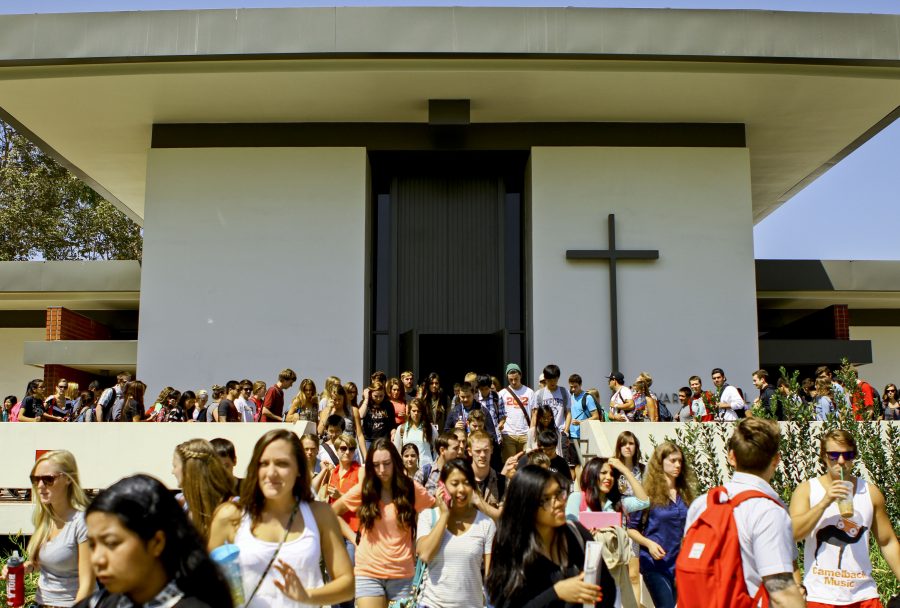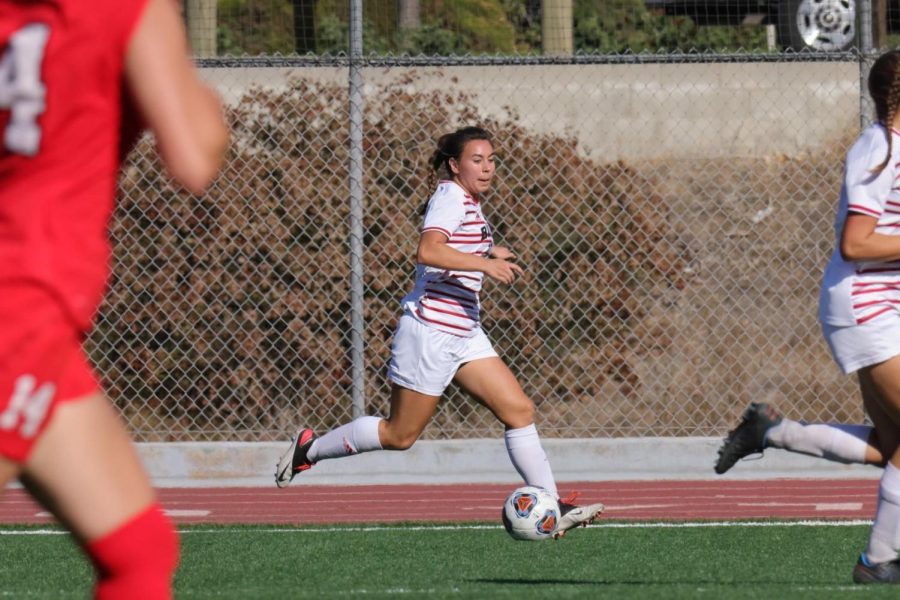Easter, the pinnacle holiday for Christianity, can often get reduced to a short and sweet “Jesus died and rose again” message, without ample time to reflect on the sacrifice of Jesus nor the ramifications his death had on the people and the city of Jerusalem. Bringing the story beyond the regulated facts into a vibrant living experience play can provide the somber remembrance this holiday warrants.
“It just opens your eyes”
“I’m really glad I got the opportunity to do it because it’s been difficult, but it’s also been one of the better experiences,” said Bree Hobbs, senior theatre major. “It just opens your eyes because you see it there in front of you, you see the impact, you see what people went through.”
Biola’s Theatre 21 company partnered with All Saints Church in Long Beach to produce an interactive play called “Good Friday at 5:15 p.m.” in order to provide people with an experiential and poignant Easter celebration.
“This is an interesting type of theater I refer to as promenade edutainment,” said Zachary Bortot, the director of the Easter play. “Promenade in the sense that the tour is walking as they’re [acting]. Then edutainment in the sense that there is enough dramatic conflict to keep someone intrigued, but they’re also getting a lot of information and perspective on the historical significance of the time period.”
The play, which runs every weekend from March 24 to April 8, brings the audience back in time to Jerusalem on the day Jesus died. It takes place right after the earthquake while the sky remains dark, and shows the Roman soldiers, shop owners and frightened Jews’ reactions to the horrific death of Jesus and the strange events that followed. A guide brings the audience in small groups through “Jerusalem” to experience one of the most powerful days in Christian history.
“That’s actually a time period that very few Christians think about,” said Christian Wilding, junior communications studies major and member of the cast. “The drama before his death, and then it just goes to he was buried and now he’s risen. There’s no in-between, but there was an in-between. There were people whose lives were indirectly and directly affected.”
“Jerusalem” consists of a set which forms a maze-like wall structure painted like a cement and brick wall and has indented areas for different stations. The production exhibits six different scenes or stations — a group of quibbling Roman soldiers, two of Pontius Pilate’s assistants arguing outside of Pilate’s house, a potter’s shop with a quarreling couple, Simon of Cyrene and his sobbing wife, a bakery with a fearful mother, the crosses at Golgotha and Jesus’ tomb with Mary Magdalene weeping next to it.
Contextual importance of the resurrection
“We need to know the events leading up to the crucifixion, we need to know what happened after the crucifixion,” said Reagan Smalley, freshman theatre major and one of the tour guides. “We need to know the characters that were involved in the crucifixion.”
The set, put up in the parking lot of the church, brings a reminder of God’s goodness to the cast and crew, as it served as a generous gift given to the cast. What could have ended as a huge cost burden for the theatre department or the church proved a great blessing of no cost at all when a friend of the director who works for Rocksteady Productions simply donated set materials and lighting equipment worth anywhere from $25,000 to $40,000 to the production.
The idea for the show originated from William Austin, a member of the All Saints Church, after getting inspired by Christmas-time walk through Bethlehem productions and live nativity sets. He gathered information and researched all of the facts, but he just needed to find a director.
When Dorothy Alston Calley, assistant professor of communications studies who attends the same church, heard of Austin’s need, she connected him with Bortot, who gladly took the challenge. Austin contributed his research and Bortot scripted it.
“I got to work with all of my favorite people, and the students have just made this process so fantastic,” Bortot said. “They never disappoint me, and they’ll always make me laugh and smile with their work.”
The show began rehearsals in the semester of fall 2016, at the same time Bortot directed the fall show. The cast started by rehearsing scene by scene separately until the performance dates loomed nearer ahead. Then they began rehearsing together and the cast members would observe up close when not doing their own scene to give their fellow cast members practice in front of an audience.
“It was interesting, because it’s a different mindset that I had to get into, because we’re trying to make it authentic to that time period,” said Wilding, who plays a husband in a potter’s shop. “Even the husband and wife dynamic [was] very different than it is now.”
“You get to tell the greatest story”
Most of the rehearsals took place on Biola’s campus, but the week prior to the opening show, the cast practiced at the church. Even though the show required a lengthy trek to Long Beach, the cast did not need to put much expense or effort into the transportation since the church rented vans to transport the cast members.
“I know a lot of work has been put into this, both [by] the school… and the church,” said Daniel Pak, junior communications studies major.
The cast, crew and church members hope this show will resonate with audience members and shine light on the importance of the betwixt portions of the Easter story.
“You get to tell the greatest story,” Bortot said. “As a theater artist, that’s our job to tell stories, and I always tell my students, ‘Jesus was a storyteller and that’s how he taught people.’ I hope people come and are affected and learn. Even if we touch just one life, that makes it worth it.”







